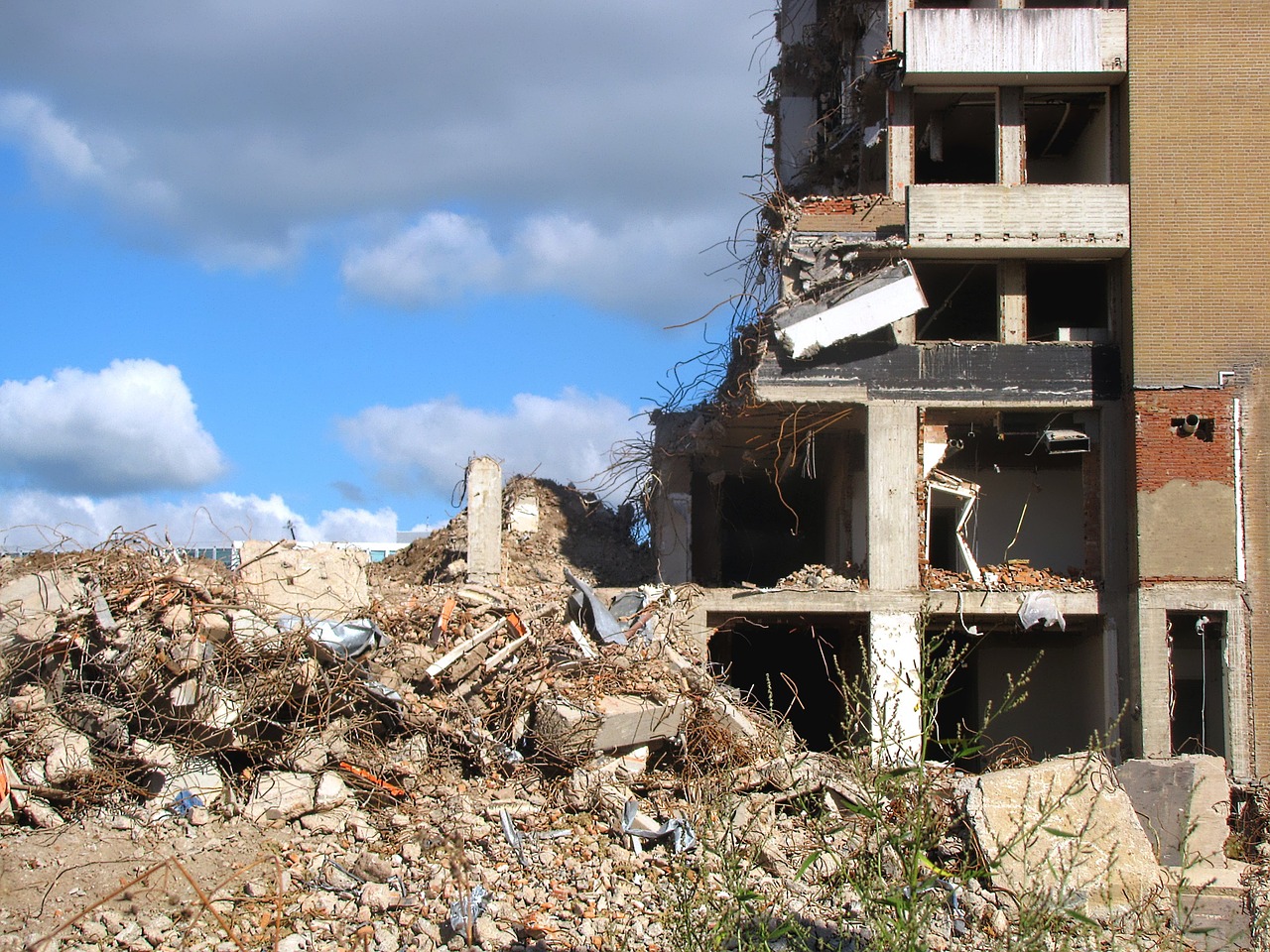Demolition safety
Contents |
[edit] Introduction
Health and safety is extremely important at all times. It is vital for construction industry professionals to review methods for maintaining safety in demolition.
[edit] Training
Construction workers should receive quality health and safety training. This is true for most industries, but it’s an important factor in many environments and should be vital for any individual using heavy machinery, equipment or leading a team.
When it comes to demolition, training is key. Anyone handling explosive and dangerous materials should know exactly what they are doing and be able to assess outcomes and potential hazards before the demolition. Having adequate training in this area will help to prevent serious accidents, which could be fatal - in particular if they are dealing with explosives.
The types of training individuals can receive for these types of jobs and environments are usually covered when receiving qualifications such as: IOSH, CITB, Working at Height, Risk Assessing and many others.
[edit] Wearing PPE is not an option
Most workers would not walk into a room full of dust and sand without the right equipment. Five-part PPE is standard for these types of situations and environments, which includes: Hard hat, high visibility vest, gloves, safety goggles and steel toe cap boots. In some cases, these items should be worn all time.
[edit] Ensuring the site is clean throughout
Keeping sites clean and safe throughout the entire process should be at the forefront of everyone’s mind - workers and site managers included. Having a clean site is standard amongst most health and safety regulations and should be implemented especially on demolition sites to ensure the safety of workers.
A safe site should ensure that every individual can access fresh drinking water and washing facilities as well as hot water and a clean and safe environment for cooking equipment. It's recommended to allocate storage space to prevent PPE from being over-worn or damaged.
[edit] Double checking during a final sweep
Before the actual demolition begins, it is a good idea to complete one final sweep throughout the entire building, in every room including any small storage areas, toilets, corridors and hallways. This will ensure that no one is left in the building and that every room is completely empty, even of furniture and other items.
During the demolition process, there should be an adequate number of workers securing the surrounding area. Their priority should be to make sure no one gets too close to the site once it starts being demolished, as this is a huge risk to health and safety.
This additional gate keeping of the site should include managing pedestrians and vehicles to ensure there is sufficient access for vehicles and walkways that do not interfere with the site. Keeping a one-way flow of traffic will prevent the need for any reversing of vehicles, which could cause problems if there isn’t a clear enough view for drivers to do so.
[edit] Post-demolition action items
After a building has been demolished, there is an incredible amount of debris; workers will need to cleanup and dispose of this debris properly. Wearing PPE during the cleanup stage is absolutely vital. With debris comes plenty of dust, sand and the potential for asbestos (although this should be removed before the site is demolished).
[edit] Related articles on Designing Buildings Wiki
- Asbestos.
- BREEAM Construction waste management.
- Construction dust.
- Deleterious materials.
- Demolition.
- Explosives.
- Filtering facepieces.
- Health and Safety.
- National Federation of Demolition Contractors NFDC.
- Personal protective equipment PPE.
- Recyclable construction materials.
- Site clearance.
- Site waste management plan.
Featured articles and news
Key points for construction at a glance with industry reactions.
Functionality, visibility and sustainability
The simpler approach to specification.
Architects, architecture, buildings, and inspiration in film
The close ties between makers and the movies, with our long list of suggested viewing.
SELECT three-point plan for action issued to MSPs
Call for Scottish regulation, green skills and recognition of electrotechnical industry as part of a manifesto for Scottish Parliamentary elections.
UCEM becomes the University of the Built Environment
Major milestone in its 106-year history, follows recent merger with London School of Architecture (LSE).
Professional practical experience for Architects in training
The long process to transform the nature of education and professional practical experience in the Architecture profession following recent reports.
A people-first approach to retrofit
Moving away from the destructive paradigm of fabric-first.
International Electrician Day, 10 June 2025
Celebrating the role of electrical engineers from André-Marie Amperè, today and for the future.
New guide for clients launched at Houses of Parliament
'There has never been a more important time for clients to step up and ...ask the right questions'
The impact of recycled slate tiles
Innovation across the decades.
EPC changes for existing buildings
Changes and their context as the new RdSAP methodology comes into use from 15 June.
Skills England publishes Sector skills needs assessments
Priority areas relating to the built environment highlighted and described in brief.
BSRIA HVAC Market Watch - May 2025 Edition
Heat Pump Market Outlook: Policy, Performance & Refrigerant Trends for 2025–2028.
Committing to EDI in construction with CIOB
Built Environment professional bodies deepen commitment to EDI with two new signatories: CIAT and CICES.
Government Grenfell progress report at a glance
Line by line recomendation overview, with links to more details.
An engaging and lively review of his professional life.
Sustainable heating for listed buildings
A problem that needs to be approached intelligently.
50th Golden anniversary ECA Edmundson apprentice award
Deadline for entries has been extended to Friday 27 June, so don't miss out!
CIAT at the London Festival of Architecture
Designing for Everyone: Breaking Barriers in Inclusive Architecture.
Mixed reactions to apprenticeship and skills reform 2025
A 'welcome shift' for some and a 'backwards step' for others.




























